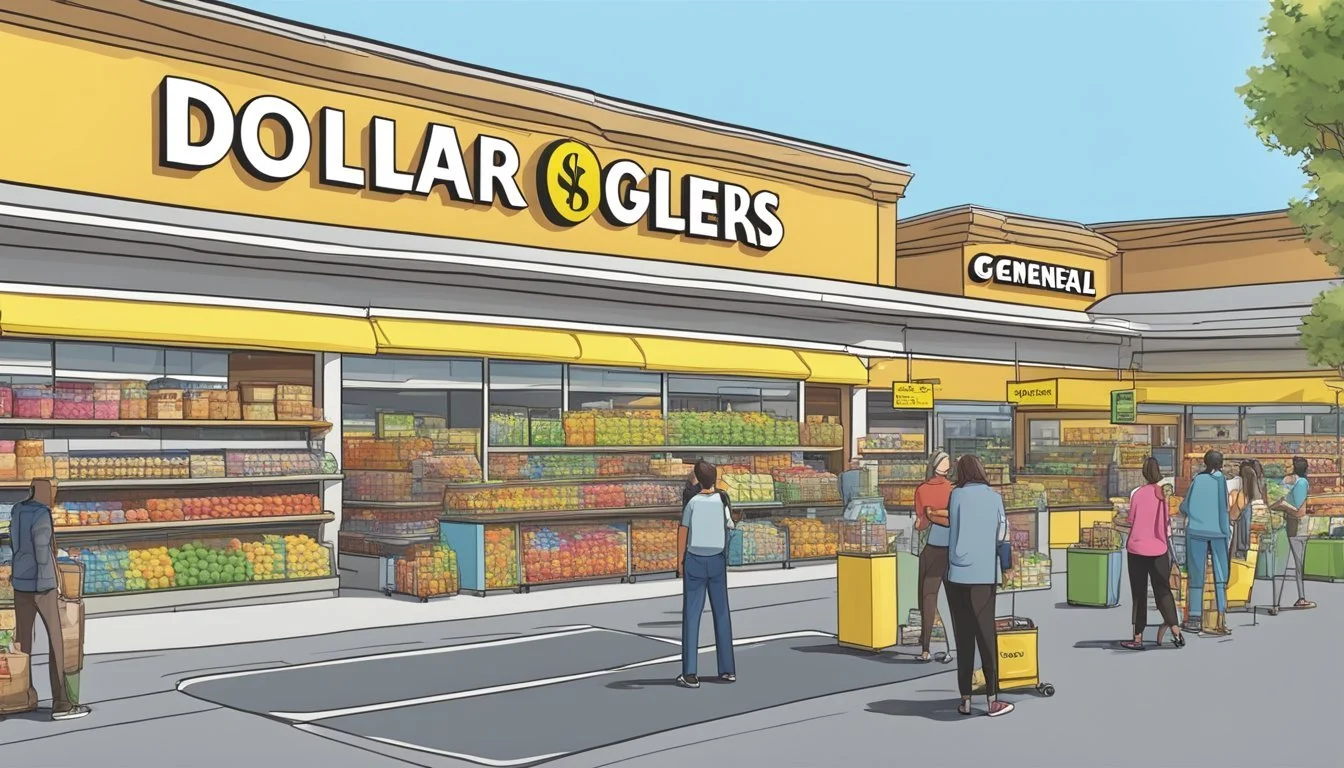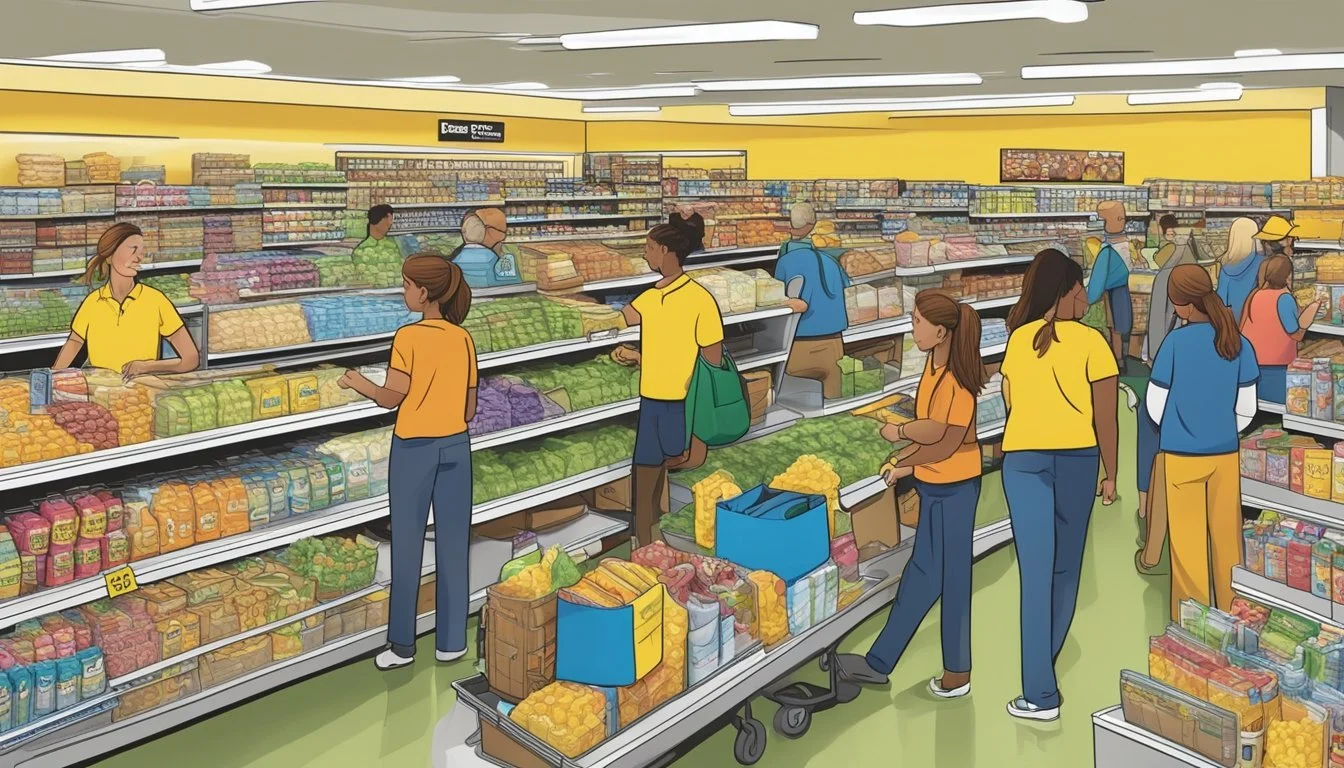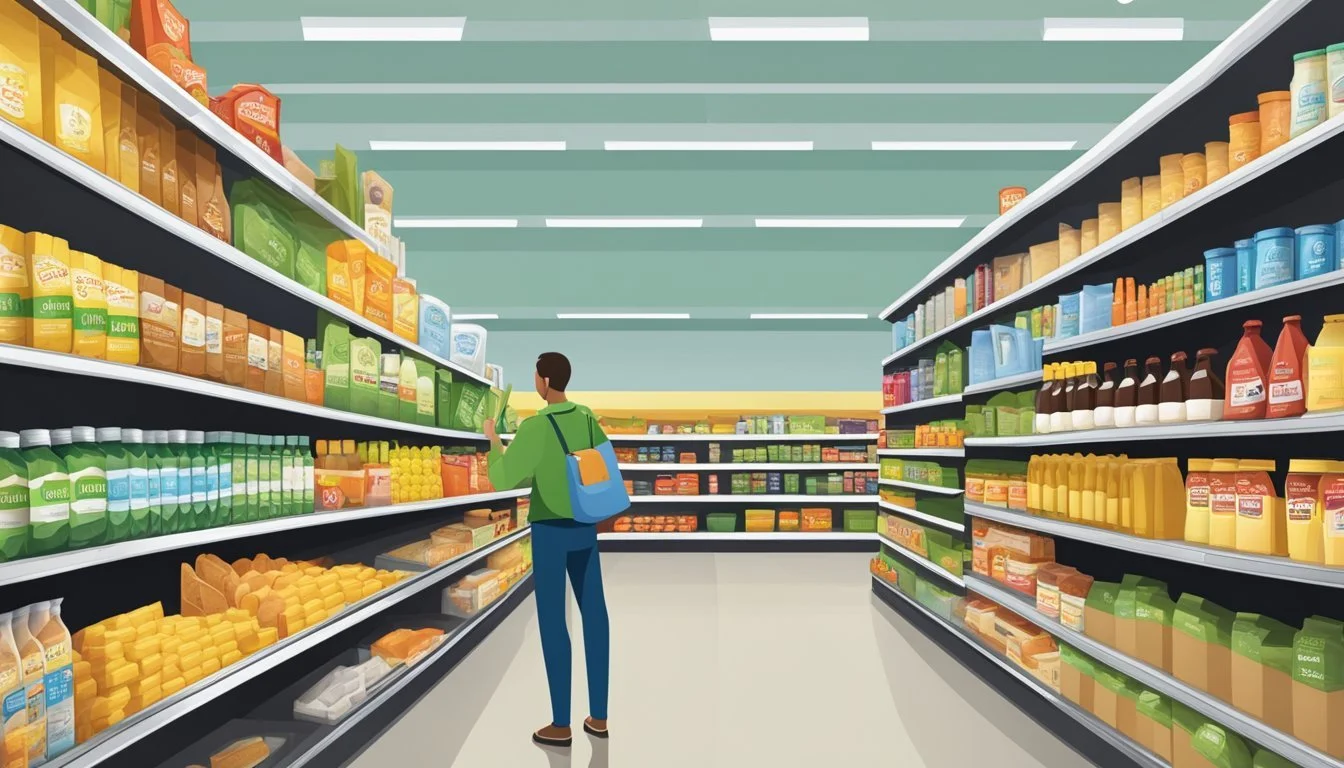Dollar General vs Raley's
Comparing Prices, Selection, and Quality
Grocery shopping can be a significant expense for many households, making the choice of store crucial for budget-conscious consumers. Dollar General and Raley's represent two different approaches to grocery retail, each with its own strengths and target market.
Dollar General has gained popularity as a discount retailer offering everyday essentials at competitive prices. While not a true "dollar store," it aims to provide affordable options for basic groceries and household items. Raley's, on the other hand, positions itself as a higher-end supermarket chain focusing on quality produce, specialty items, and customer service.
The decision between Dollar General and Raley's depends on individual priorities. Those seeking rock-bottom prices on a limited selection of staples may prefer Dollar General. Shoppers who value a wider range of products, fresher produce, and a more upscale shopping experience might find Raley's more appealing. Factors such as location, product quality, and specific household needs play a role in determining which store offers the better overall value for each customer.
Company Profiles
Dollar General and Raley's have distinct histories and market positions in the grocery retail industry. Both companies have grown from humble beginnings to become significant players in their respective regions.
History of Dollar General
Dollar General traces its roots back to 1939 when J.L. Turner and his son Cal opened J.L. Turner and Son Wholesale in Scottsville, Kentucky. The company initially focused on selling closeout merchandise at low prices.
In 1955, the Turners converted their wholesale business into a retailer called Dollar General Corporation. The name reflected their strategy of selling no item for more than one dollar.
Dollar General expanded rapidly through the 1960s and 1970s, opening stores across the rural South and Midwest. By 1977, the company had gone public and operated over 1,000 stores.
Today, Dollar General operates over 17,000 stores across 46 states. The company has evolved its pricing strategy but maintains a focus on offering everyday low prices on household essentials.
History of Raley's
Raley's was founded in 1935 by Thomas P. Raley in Placerville, California. The company began as a single store focused on providing quality products and customer service.
Under the leadership of Thomas Raley and later his daughter Joyce Raley Teel, the company expanded throughout Northern California and Nevada. Raley's acquired several other regional chains, including Bel Air Markets and Nob Hill Foods.
In 1986, Raley's moved its headquarters to West Sacramento, California. The company has remained family-owned and operated throughout its history.
Raley's has continued to innovate, launching the Raley's O-N-E Market concept in 2020, which focuses on organic, natural, and healthier food options. The company now operates over 120 stores across Northern California and Nevada.
Store Locations and Accessibility
Dollar General and Raley's have distinct geographical footprints. Their store locations and accessibility differ significantly, impacting customer convenience and market presence.
Dollar General's National Reach
Dollar General boasts an extensive network of stores across the United States. The company operates over 18,000 locations in 47 states, focusing on rural and suburban areas. Many Dollar General stores are situated in small towns and communities with populations under 20,000.
Dollar General's strategy involves placing stores within a 5-mile radius of target customers. This approach makes their locations easily accessible to a large portion of the population. The chain often fills gaps in areas underserved by larger retailers.
In metro areas, Dollar General maintains a presence but faces more competition. The company continues to expand, opening hundreds of new stores annually.
Raley's Presence in the West
Raley's operates on a much smaller scale, concentrating its stores in the Western United States. The chain has approximately 130 locations across Northern California and Nevada. Raley's headquarters is in West Sacramento, California.
The company focuses on providing quality grocery services to communities in its operating regions. Raley's stores are typically found in suburban and urban areas, catering to local neighborhoods.
Unlike Dollar General's nationwide coverage, Raley's has a more limited geographical reach. This regional focus allows the company to tailor its offerings to local preferences and maintain strong community ties.
Raley's also operates under other banners, including Bel Air Markets and Nob Hill Foods, expanding its presence within its core market area.
Product Selection and Quality
Dollar General and Raley's offer distinct product selections tailored to different customer needs. Their approaches to quality and merchandise mix vary significantly, reflecting their unique market positions and target demographics.
Dollar General's Merchandise Mix
Dollar General focuses on providing affordable essentials and household items. The store stocks a limited selection of groceries, including canned goods, packaged snacks, and frozen foods. Fresh produce offerings are minimal, with some locations carrying basic fruits and vegetables. Dollar General's meat selection typically consists of frozen and processed options rather than fresh cuts. The retailer emphasizes non-perishable items and household products, catering to budget-conscious shoppers seeking convenience and value.
Raley's Focus on Freshness
Raley's prioritizes high-quality produce, meats, and organic options. The supermarket chain is known for its extensive fresh fruit and vegetable selection, sourcing from local farms when possible. Raley's meat department offers a wide variety of cuts, including premium and organic choices. The store's deli section features prepared foods and specialty items. Raley's also maintains a robust organic and natural foods section, catering to health-conscious consumers. The retailer emphasizes product quality and freshness across its departments, positioning itself as a destination for discerning shoppers.
Pricing and Saving Opportunities
Dollar General and Raley's employ different pricing strategies and offer various ways for customers to save money. Their approaches to everyday pricing, discounts, and loyalty programs can significantly impact shoppers' budgets.
Comparing Everyday Prices
Dollar General typically offers lower everyday prices compared to Raley's. Many items at Dollar General are priced at $1 or less, making it an attractive option for budget-conscious shoppers. Raley's, as a traditional supermarket, generally has higher average prices but may offer a wider selection of products.
Dollar General focuses on providing essential items at competitive prices. They often have lower-priced generic or store-brand alternatives to name-brand products. Raley's pricing tends to be higher, especially for premium or organic items.
Some grocery staples may be cheaper at Dollar General, while fresh produce and specialty items might be more reasonably priced at Raley's. It's important to compare specific product prices between the two stores to determine the best value for individual shopping needs.
Discounts and Loyalty Programs
Both stores offer ways for customers to save beyond everyday prices. Dollar General frequently runs sales on various items, particularly seasonal products. They also provide digital coupons through their app, allowing customers to clip and redeem discounts easily.
Raley's operates a loyalty program called "Something Extra". Members earn points on purchases, which can be redeemed for discounts on future shopping trips. The program also offers personalized deals based on shopping habits.
Dollar General doesn't have a traditional loyalty program but offers "DG Digital Coupons" for additional savings. These coupons change regularly and often include discounts on popular brands.
Raley's typically has more extensive weekly sales, including "loss leaders" to attract customers. They may offer deeper discounts on perishable items like meat and produce. Dollar General's sales tend to focus more on non-perishable goods and household items.
Customer Experience and Service
Dollar General and Raley's offer distinct customer experiences tailored to their target markets. Both retailers prioritize service but take different approaches to meet shopper needs.
In-Store Services Comparison
Dollar General focuses on convenience and affordability. Stores are typically smaller with a limited selection of groceries and household items. Self-checkout options are available at many locations to speed up transactions.
Raley's provides a more upscale shopping experience. Stores feature wider aisles, fuller product ranges, and specialty departments like bakeries and delis. Many locations offer pharmacy services and fuel stations.
Customer surveys indicate higher satisfaction ratings for Raley's in terms of store cleanliness, product quality, and staff helpfulness. Dollar General receives praise for its competitive pricing and quick shopping trips.
Online Shopping and Delivery
Dollar General has expanded its digital presence. The DG Go app allows customers to scan items and pay through their phones. Curbside pickup is available at select stores.
Raley's offers more comprehensive online grocery options. Shoppers can place orders through the website or mobile app for home delivery or curbside pickup. The service integrates with loyalty programs and digital coupons.
Neither chain partners with Amazon Prime for grocery delivery. Raley's tends to receive higher marks from consumers for its user-friendly online interface and reliable delivery services.
Community Impact and Sustainability
Dollar General and Raley's take different approaches to supporting local communities and environmental sustainability. Their initiatives reflect distinct priorities in corporate social responsibility and eco-friendly practices.
Corporate Social Responsibility
Dollar General focuses on literacy through its Dollar General Literacy Foundation. The foundation awards grants to nonprofit organizations, schools, and libraries to support adult, family, and summer literacy programs. In 2023, it awarded over $200 million in grants since its inception.
Raley's emphasizes food access and nutrition education. The company partners with local food banks to provide fresh produce and healthy meals to families in need. Its "Food For Families" program has donated over 40 million pounds of food since 1986.
Both retailers support disaster relief efforts in their communities. Dollar General provides emergency supplies and financial assistance, while Raley's mobilizes its distribution network to deliver essential items to affected areas.
Environmental Initiatives
Dollar General has made efforts to reduce its environmental footprint. The company has implemented energy-efficient lighting and HVAC systems in stores. It also focuses on recycling cardboard and plastic from its distribution centers.
Raley's takes a more comprehensive approach to sustainability. The company prioritizes organic produce and sustainably sourced products in its stores. It has also launched initiatives to reduce food waste, including:
Partnering with food recovery organizations
Composting unsold produce
Offering imperfect produce at discounted prices
Raley's has set ambitious goals to reduce greenhouse gas emissions and increase renewable energy use across its operations. The company aims to achieve net-zero emissions by 2040.
Market Position and Competition
Dollar General and Raley's occupy distinct positions in the grocery retail landscape, each with unique strengths and market focuses. Their competitive strategies reflect different approaches to serving customer needs and preferences.
Dollar General in the Retail Landscape
Dollar General has established itself as a dominant force in the discount retail sector. With over 18,000 stores across 47 states, it rivals Walmart in rural market penetration. The company's focus on low prices and convenience has resonated with budget-conscious shoppers.
Dollar General's product mix includes groceries, household items, and basic health products. This broad assortment allows it to compete with traditional supermarkets and big-box retailers like Walmart and Target.
The chain's smaller store format gives it an edge in rural and urban areas where larger competitors may not be viable. Dollar General's expansion into fresh produce through its DG Market concept aims to further solidify its position as a one-stop shop for value-oriented customers.
Raley's Competitive Edge
Raley's occupies a different niche in the grocery market, focusing on quality and customer service. The regional chain operates primarily in Northern California and Nevada, competing against larger national chains and local independents.
Raley's differentiates itself through:
High-quality produce and prepared foods
Emphasis on organic and natural products
Strong customer loyalty programs
Community involvement and local sourcing
This strategy positions Raley's as a premium alternative to discount chains like Dollar General and Walmart. It competes more directly with Whole Foods, Sprouts, and upscale regional grocers.
Raley's has invested in store renovations and expanded its private label offerings to enhance its competitive position. The company's focus on fresh, healthy options aligns with growing consumer trends towards wellness and sustainability.
Final Thoughts
Dollar General and Raley's cater to different consumer needs and preferences. Dollar General focuses on affordability and convenience, offering a wide range of budget-friendly products in smaller stores.
Raley's, on the other hand, emphasizes quality, fresh produce, and a more upscale shopping experience. Consumer Reports and other researchers have found that Dollar General generally offers lower prices on many items.
However, Raley's typically provides a larger selection of fresh foods and specialty products. The choice between the two stores depends on individual priorities - budget, product variety, or shopping atmosphere.
Both retailers have their strengths. Dollar General excels in quick, low-cost shopping trips. Raley's shines in its produce department and customer service.
Knowledgeable shoppers may find value in visiting both stores. They can purchase staples and household goods at Dollar General while getting fresh ingredients from Raley's.
Ultimately, the better option varies based on personal needs, location, and shopping habits. Consumers should compare prices, quality, and convenience to determine which store best suits their lifestyle.









